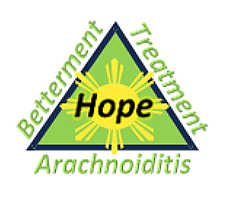How To Get More Pain Relief From Rx Opioids
/By Drs. Forest Tennant, Martin Porcelli and Scott Guess
Due to a multitude of legal restrictions and biases, many persons living with pain who take opioid medication can’t get enough relief to function, be comfortable, and have quality of life.
Summarized below are some of the ways we have found to boost or enhance the pain-relieving effect of prescription opioids.
Take a Booster (Potentiator)
Opioids trigger the endorphin receptor to relieve pain. If you simultaneously take a medicine or supplement that triggers a different receptor or suppresses inflammation, pain relief is enhanced. This boosting effect is the reason opioids are combined with acetaminophen or aspirin in pain medications such as Vicodin or Percocet.
Here is a list of potential non-prescription boosters. You may have to experiment to find one or two that boost the potency of your opioid. You can swallow the booster with your oral opioid or take the booster within 15 minutes after taking the opioid.
Taurine 1000 mg
Glutamine 1000 mg
Lion’s Mane mushrooms
Quercetin
Benadryl
St. John’s wort
White willow bark
Cannabidiol (CBD)
Kava
Palmitoylethanolamide (PEA) 300 to 600 mg
Under the Tongue vs Swallowing
A medication dissolved under the tongue (sublingually) is always more potent than if you swallow it whole. That’s because digestion in the stomach and intestines may wipe out as much as 50% of an oral opioid’s pain relief capability.
Try dissolving an opioid tablet under your tongue. You may find it much more effective, as it will enter the bloodstream faster. We recommend starting with half your usual dose and increase it as needed, being careful not to exceed your usual dose. Discuss this practice with your medical practitioner.
Don’t Forget Aspirin
Aspirin has been disparaged to the point that people are afraid to take it. It is still one of the very best opioid boosters. Dissolve it under your tongue to avoid stomach upset or bleeding.
Receptor Health
The central nervous system has many receptors (“action points”) that relieve pain. They need to stay healthy and active to provide maximal pain relief. A good nutrition program that consists of daily protein, vitamin D, and magnesium helps keep nerve receptors healthy and maximizes opioid pain relief.
Bedtime Preparation
Some medicinals taken at bedtime have the effect of making the next day’s opioids more effective. Here are some suggestions:
Metformin 500 mg + L-Theanine 200 mg
Tryptophan 500 to 1000 mg
Amitriptyline
Pentoxifylline
Cannabis
Some persons find that cannabis provides significant pain relief, while others experience little or no relief.
Do not take cannabis products within four hours before or after an opioid dosage to avoid over-sedation, loss of coordination, and mental deficiency.
Kratom
Kratom is the only non-prescription herbal supplement that has opioid-like effects. It comes in a variety of forms, usually natural leaf powder that is sold in capsules, edibles or drinks.
Kratom can be simultaneously taken with opioids, but be wary of synthetic or concentrated kratom as its potency may be unknown or too high.
All persons who take opioids for pain relief should find a kratom form and dosage that relieves pain. Given today’s adverse attitudes and restrictions on opioids, a person relying on prescription opioids alone must face the fact that their medical practitioners may end or reduce their opioid therapy at any time. When this happens, you may have to rely on kratom.
Prescription Boosters
Many physicians prescribe non-opioid medications for pain relief, such as gabapentin (Neurontin), clonidine, tizanidine, baclofen, and pregabalin (Lyrica). These can also be used to boost the potency of opioids. Take these medications within four hours before or after your opioid dose.
Forest Tennant, MD, DrPH, is retired from clinical practice but continues his research on the treatment of intractable pain and arachnoiditis. Readers interested in learning more about his research should visit the Tennant Foundation’s website, Arachnoiditis Hope. You can subscribe to its research bulletins here.
Martin J. Porcelli, DO, is a family medicine doctor in Pomona, CA and is affiliated with Casa Colina Hospital.
Scott Guess, PharmD, operates an independent pharmacy and clinic in Atascadero, CA that specializes in pain management and arachnoiditis.
The Tennant Foundation gives financial support to Pain News Network and sponsors PNN’s Patient Resources section.




